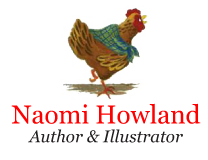My interview with David Small, Caldecott Award Winner and illustrator of Princess Says Goodnight
David, thank you so much for agreeing to be interviewed. I love the illustrations you did for Princess Says Goodnight.
And I love the story! The moment I read it I loved it and I knew that, if I read it 150 times more I would still love it. In other words, it had the essential ingredient of a good kid’s book: staying power. That said, now that I have actually read it 150 times or more, and added those pictures, I still think of it with delight. I can’t say that about all the books I’ve illustrated.
Question: Does the little girl in the book remind you of anyone you know?
Answer: Yes, yes, it’s Lily, my granddaughter, now 5. (See picture.) Her dad—my stepson Mark—plays the Dad. I didn’t use Carol, her mom, as a model because at the time I had so few good photos of her, but there is a resemblance there. They live in L.A., which is why the cityscape in the end—when the story returns to reality—looks something like a classic L.A. nighttime shot.
Q: When you were learning to illustrate books, was there someone whose work you especially admired? Are there other artists whose work you love?
A: Tons of them. As a student I tried at various times to channel, among others, Rembrandt, Daumier, and an obscure German artist named Heinrich Kley. All of them have several things in common: all of them were ironic commentators on their society, all of them drew loosely but with precision, and all of them had so much life in their work because they knew the anatomical structure. This, obviously, was coupled in all of them this with an athlete’s natural sense of balance and the body’s potential for movement. Those qualities, which are very hard to learn, are essential to good drawing, and drawing is still the cornerstone of all art. (I don’t want to go on a rant about this, but I do take every opportunity offered me to rail against computers as art tools. They certainly have their place, but they are incapable of investing a sense of life onto pictures. For that you must learn to draw. End of rant. Sorry. No. Not sorry.)
Q: Your style is so fluid; nothing looks labored at all. Do you do a lot of preliminary drawings first?
A: It’s sleight of hand! All illustrators aim for the Effortless Look, but even someone whose work is as loose as Quentin Blake has admitted publicly to laboring over and throwing away a lot of pictures. (When I read that I felt a very brotherly feeling for Mr. Blake, and grateful to him as well, for admitting that he doesn’t just toss things off.) If I kept all of my sketches I’d have to build a separate storage facility for them! And it would be a gigantic one! I have a very full wastebasket just to the right of my drawing table, and a much-used burn barrel out back. All of this is horrifying news to people after my archives, but the truth is, I would not be happy discovering most of that stuff on anyone’s wall in the future. As for the archivists, bless their good impulses but I don’t see much reason for storing and looking at an artist’s bad stuff. Let students see only the best and have them try to rise to it. Of course mistakes are how we learn, but what real good does it do to see what it looked like when Rembrandt was having a bad day? I know this is totally arguable, but it’s how I feel. Maybe I just don’t like the idea of anyone studying my crummy sketches and coming back to me saying, "Jeesh, I just saw that preliminary junk you did for the Princess book! You must have really been under the weather; I hope you’re doing better now!"
Q: When you received this manuscript, did you immediately “see” any of the pictures you were going to draw? Which one(s)?
A: I saw (let’s call it) The Tower and The Sheep almost immediately, drew it as I saw it, and that was that. It never changed. It was that rare instance where—unlike what I was just talking about—an image appears in the brain and translates nicely and easily to paper. Very satisfying.
Q: The swan bath is one of my favorite illustrations, it’s so extravagant. What does your bath tub look like?
A: My bath looks like the inside of a gigantic mouth with great big molars to sit on poolside, while you dangle your feet. I use the tongue as a water slide.
Q: If you lived in a kingdom, who would you be…a king, jester, or footman?
A: I would be the king’s dwarf. It’s like being the jester, only smaller. Because they are small they know all the castle secrets.
Thanks so much for doing this interview, David. It was great talking with you!


